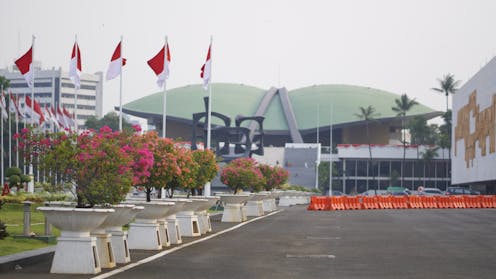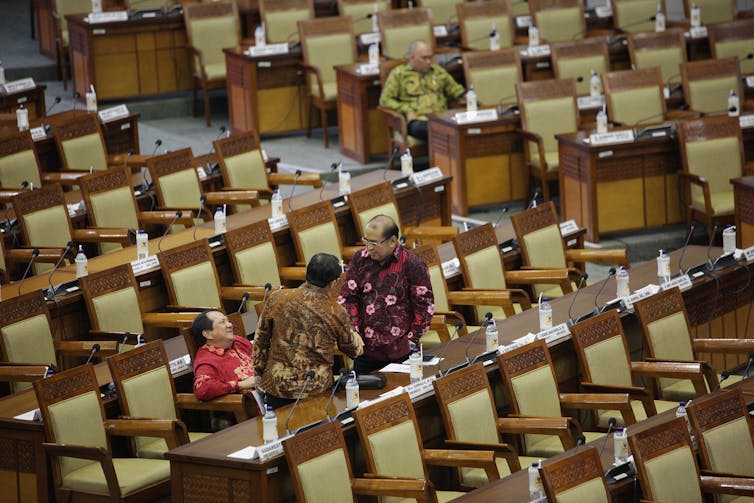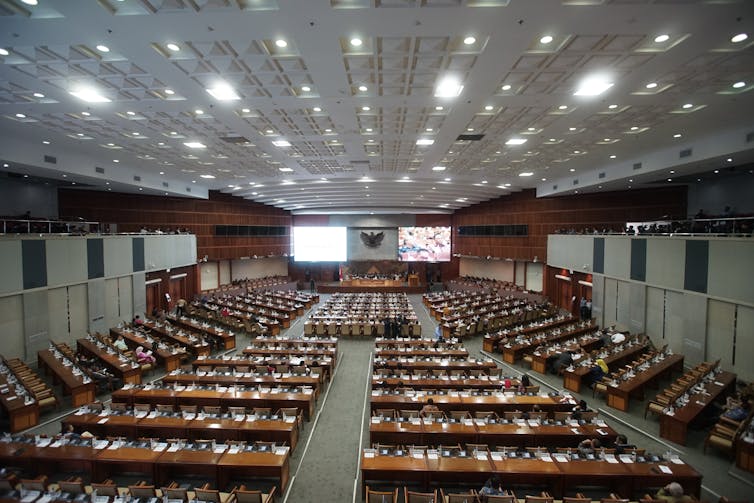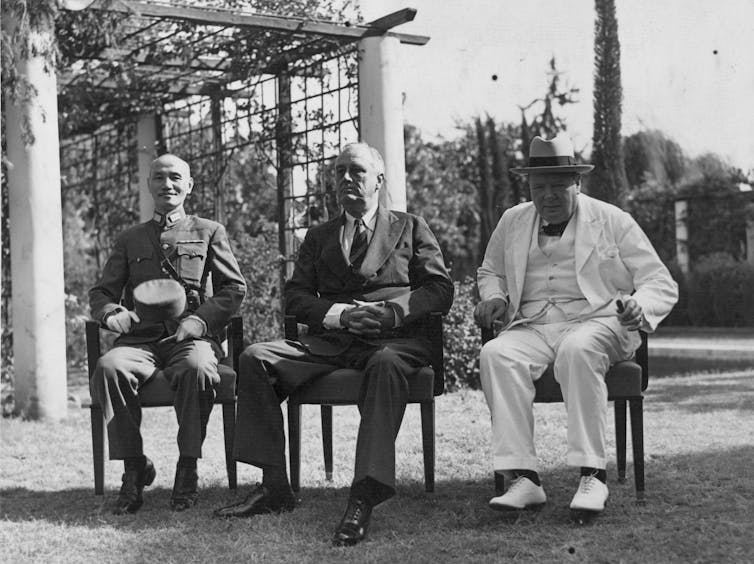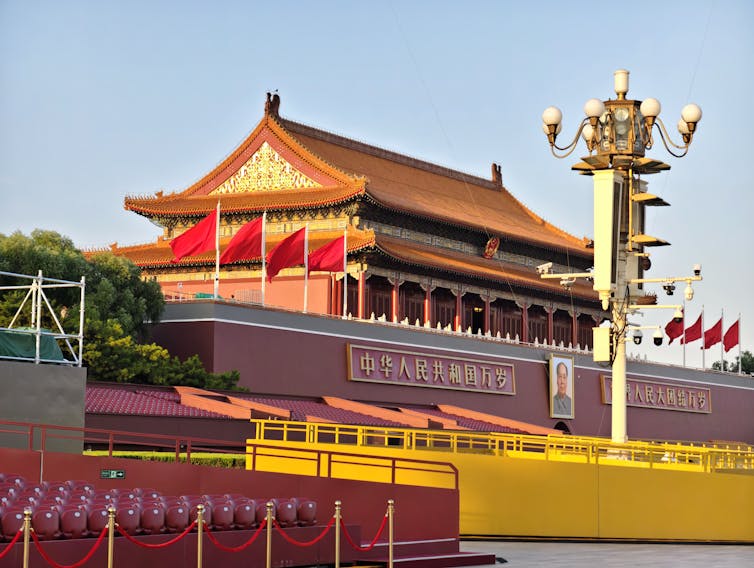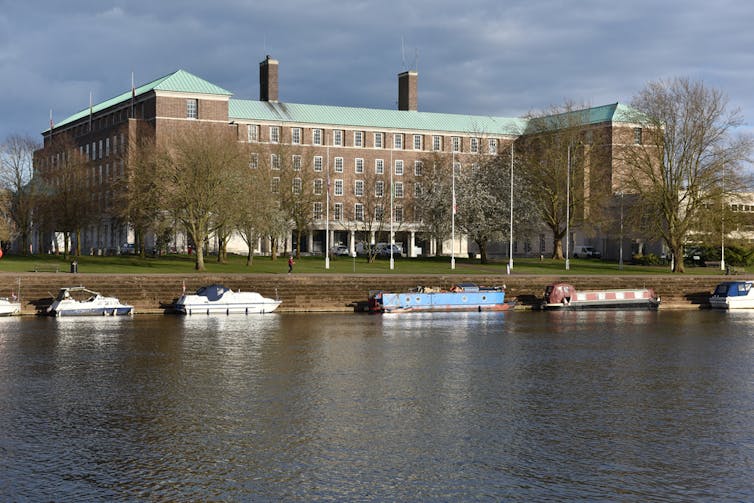Source: The Conversation – UK – By Stefan Wolff, Professor of International Security, University of Birmingham
China’s president, Xi Jinping, has been busy on the diplomatic front. China has just hosted the largest annual summit of the Shanghai Cooperation Organisation (SCO), followed by an impressive military parade to mark the defeat of Japan in the second world war – all accompanied by key bilateral meetings with heads of state from like-minded countries. You could be forgiven for thinking Beijing is now the diplomatic capital of the world.
But look behind the facade of bonhomie on display in the Chinese capital, and the unity underpinning a new China-led global order looks a lot more fragile than Xi would have you believe.
The most important result of the SCO summit on August 31 and September 1 was not the fact that leaders adopted a lengthy communique and more than 20 joint statements on issues as diverse as artificial intelligence, green industries and international trade. What mattered most was the attendance of India’s prime minister, Narendra Modi, and the rapprochement between New Delhi and Beijing.
This was Modi’s first visit to China in seven years. That his country’s relations with China continue to improve was made clear by Modi’s positive assessment of his bilateral meeting with Xi (“fruitful”) and also their relationship, which he said is based on “mutual respect, mutual interest and mutual sensitivity”.
Another obvious indicator of China trying to pull India closer into the SCO fold was its unequivocal condemnation of the terror attacks in Pahalgam in Kashmir in April 2025. China’s earlier failure to do so had prevented India’s defence minister from signing a similar communique at a meeting of SCO defence ministers in June.
Modi’s attendance also provided the opportunity for him and Xi to demonstrate their continuing support for Russia’s president, Vladimir Putin. As far as alliances go, one between China, Russia and India would be a formidable factor in the remaking of the international order. But while there was an impressive display of solidarity between the three leaders, they are united by little more than their opposition to the current US-dominated order.
There was plenty of talk from Xi at the SCO summit about reforming the current system of international affairs – the latest blueprint of which is his Global Governance Initiative, which aims to transform the UN into a Beijing-led instrument. But the prospects of rapid change are limited.
China and India are both deeply integrated into the current international financial and economic system – as are most other SCO member states and partner countries. They may resent Donald Trump and his tariff policies but – with the partial exception of China’s dominance of the global rare-earth trade – they have little leverage.
Another problem for Xi is the fact his various forays into reshaping the international system are at best complementary. There is some overlap between the SCO and his other signature project, the Belt and Road Initiative (BRI). But while the BRI is global and focused primarily on extending China’s reach by economic means, the SCO is much more regional in outlook and focused on security.
Add to that the Brics (Brazil, Russia, India, China, South Africa) group, and China’s approach to remaking the international system begins to look less like a coherent strategy than a series of trial balloons – with even Xi unsure which will eventually pave the way to China’s global leadership role.
A final issue for Xi is that he is limited in his choice of partners. At the SCO summit in Tianjin, it was all about relations between China, Russia and India. Two days later at the victory parade in Beijing, the fledgling alliance between China, Russia and North Korea seemed to take centre stage. However, the absence of Modi from this event demonstrated that India does not want to be too closely associated with North Korea.
Xi has different options in how he pursues his challenge to the current world order – but some are mutually exclusive. Not everyone in his orbit is comfortable with all the political alignments the Chinese president chooses.
Antipathy to US-led order
This is not to say that China’s quest to replace the US as the global superpower is bound to fail. There is a logic to what Xi is doing. He is building a Chinese-dominated sphere of influence in Asia as a power base from which to reach for global hegemony.
But outside a small circle of similarly autocratic leaders, what has propelled this project so far is less the appeal of a China-led international system than dissatisfaction with the existing liberal international order. And while this dissatisfaction predates the current incumbent of the White House, it has been aggravated over the first six months of Trump’s second term.
More than two decades of careful recalibration of US relations with India, including drawing New Delhi into an alliance pushing back against China in Asia, appear recently to have been sacrificed at the altar of Trump’s insatiable vanity.
When India failed to acknowledge his claim to have mediated in its row with Pakistan after the Pahalgam terror attack and declined to join Pakistan in nominating Trump for a Nobel peace prize, his response was to rekindle relations with Pakistan and impose punitive tariffs on India.
Simultaneously, Trump’s wholly misguided America-first foreign policy has undermined the very relationships in Europe and Asia that underpinned the liberal international order and secured US dominance. At least his latest insight – that China, Russia and North Korea “conspire against the United States” – gives a glimmer of hope for America’s concerned allies in the west that the US president will change course in how he deals with Beijing, Moscow and Pyongyang.
If Trump doesn’t recognise the value of his country’s allies in managing the challenge that China clearly poses to the US, Xi’s sphere of influence may quickly extend far beyond Asia. This could relegate the US to a second-order power confined to – but not necessarily secure in – a diminishing sphere of influence.
![]()
Stefan Wolff is a past recipient of grant funding from the Natural Environment Research Council of the UK, the United States Institute of Peace, the Economic and Social Research Council of the UK, the British Academy, the NATO Science for Peace Programme, the EU Framework Programmes 6 and 7 and Horizon 2020, as well as the EU’s Jean Monnet Programme. He is a Trustee and Honorary Treasurer of the Political Studies Association of the UK and a Senior Research Fellow at the Foreign Policy Centre in London.
– ref. What Xi Jinping hosting Modi and Putin reveals about China’s plans for a new world order – https://theconversation.com/what-xi-jinping-hosting-modi-and-putin-reveals-about-chinas-plans-for-a-new-world-order-262244







